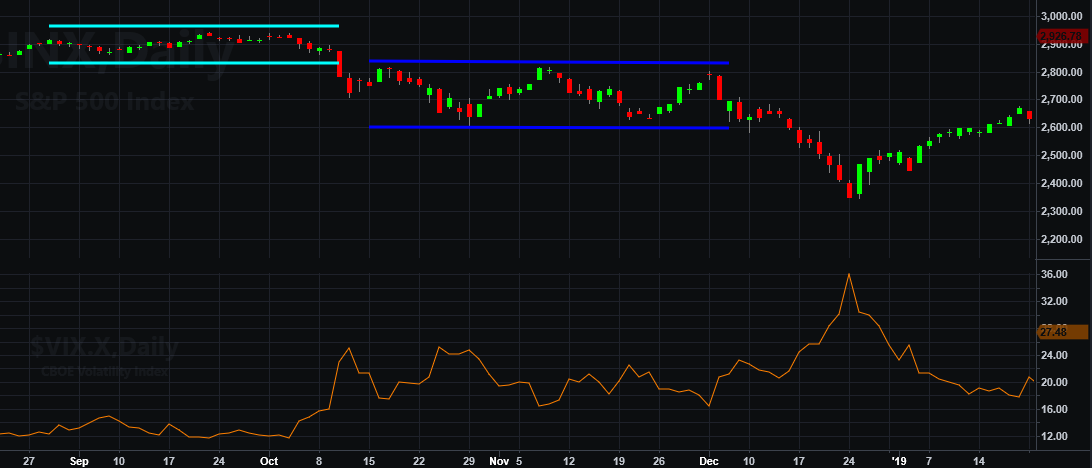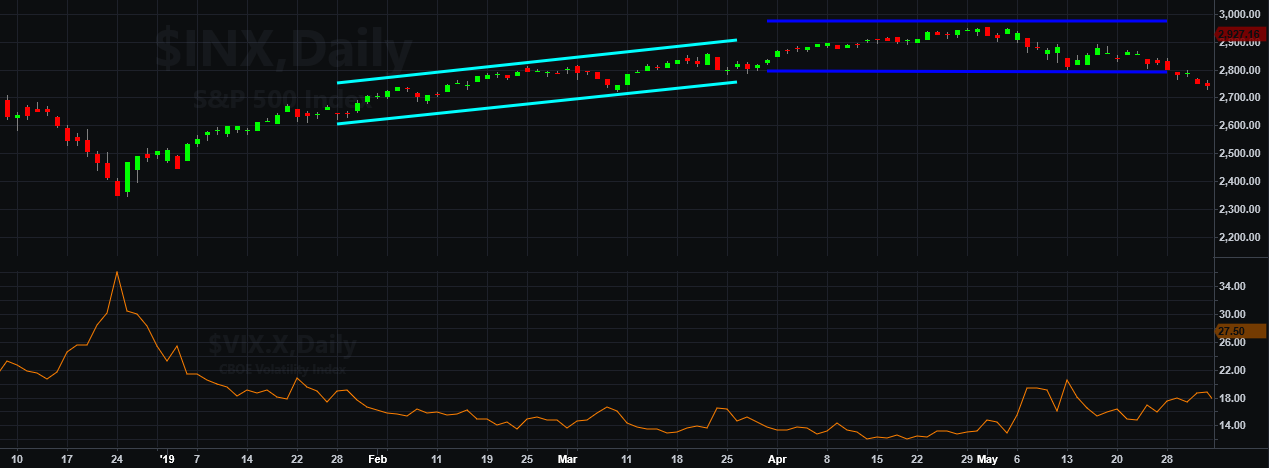Markets major moves followed by consolidation periods as a prelude to the next major move, explains Robb Ross.
In Texas we have a saying - "The only thing in the middle of the road are yellow lines and dead armadillos"
U.S. Stock market has a historic tendency to make dramatic moves then afterwards it will move sideways, or sideways to up, or sideways to down for a period of time that is longer than the dramatic move. This sets up the wedge formations that are a precursor of the next major move.
Below is a chart of recent S&P 500 price action.

Similar price action occurred leading up to December 2018 in the S&P 500 (see below).

The market moved sides ways, had a move down in early Oct 2018 and then formed a new sideways pattern until the December 2018 end of year drop.
Sideways moves wreak havoc on breakout and trend systems. Most of the time, markets are in a sideways pattern until new underlying information comes into play. And when new information comes into play the market usually moves dramatically or gyrates back and forth.
After the December 2018 drop and recovery the market then did a sideways to up move then just a sideways move for a while. These things are usually 40 plus days or longer. You can also see the Cboe Volatility Index’s (VIX) reaction on to this move (below).

As the market ends the sideways move and makes a dramatic rise or fall many will fail to act and that's where we'll see 'Yellow Lines and Dead Armadillos".
Robb Ross is the owner of White Indian Trading company, an award-winning CTA. He has over 25 years of I.T. and system development experience. He is author of the soon to be released book, “21st Century Technical Indicators.” Hear Ross describe the Alternative Hedge Options Strategy, aka Scantilly Clad Straddle


















